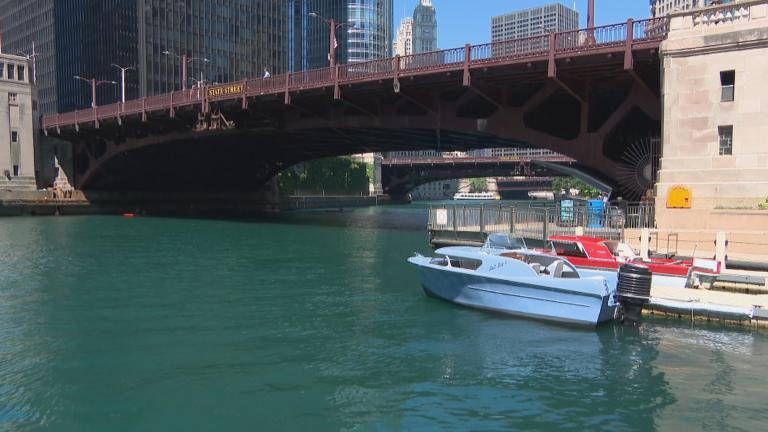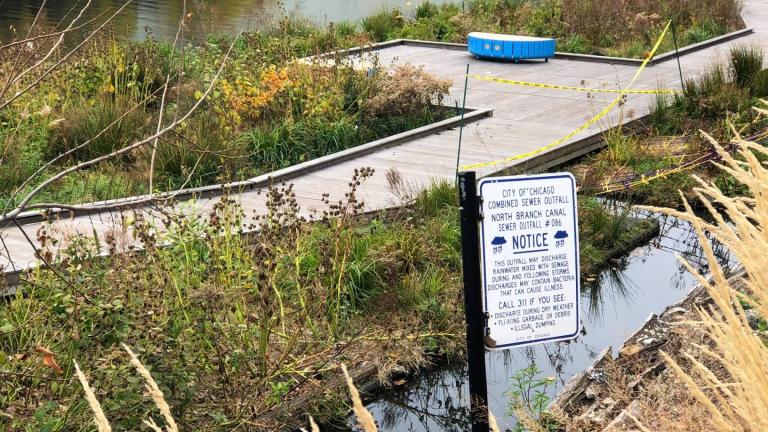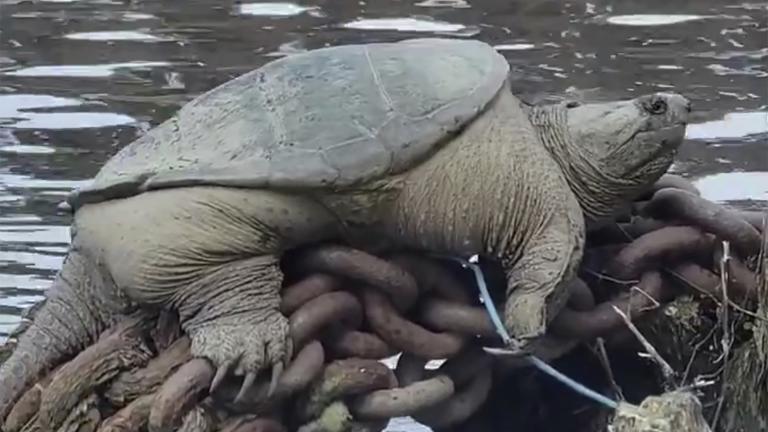 A volunteer pulls a freshwater mussel from the Chicago River, Dec. 12, 2023. (Patty Wetli / W
A volunteer pulls a freshwater mussel from the Chicago River, Dec. 12, 2023. (Patty Wetli / W
Anyone who thinks of science as a sterile occupation should spend a morning hunting for freshwater mussels in the Chicago River.
“Hunting” as in scouring the murk for any sign of one of these burrowing mollusks, easily mistaken for a leaf or rock. It’s wet and dirty business, with a high chance of failure and, in winter, bone chillingly cold to boot.
So why would anyone sign up for the job? To play a small role in the revival of Chicago’s once thriving waterway, which is still recovering from decades of abuse.
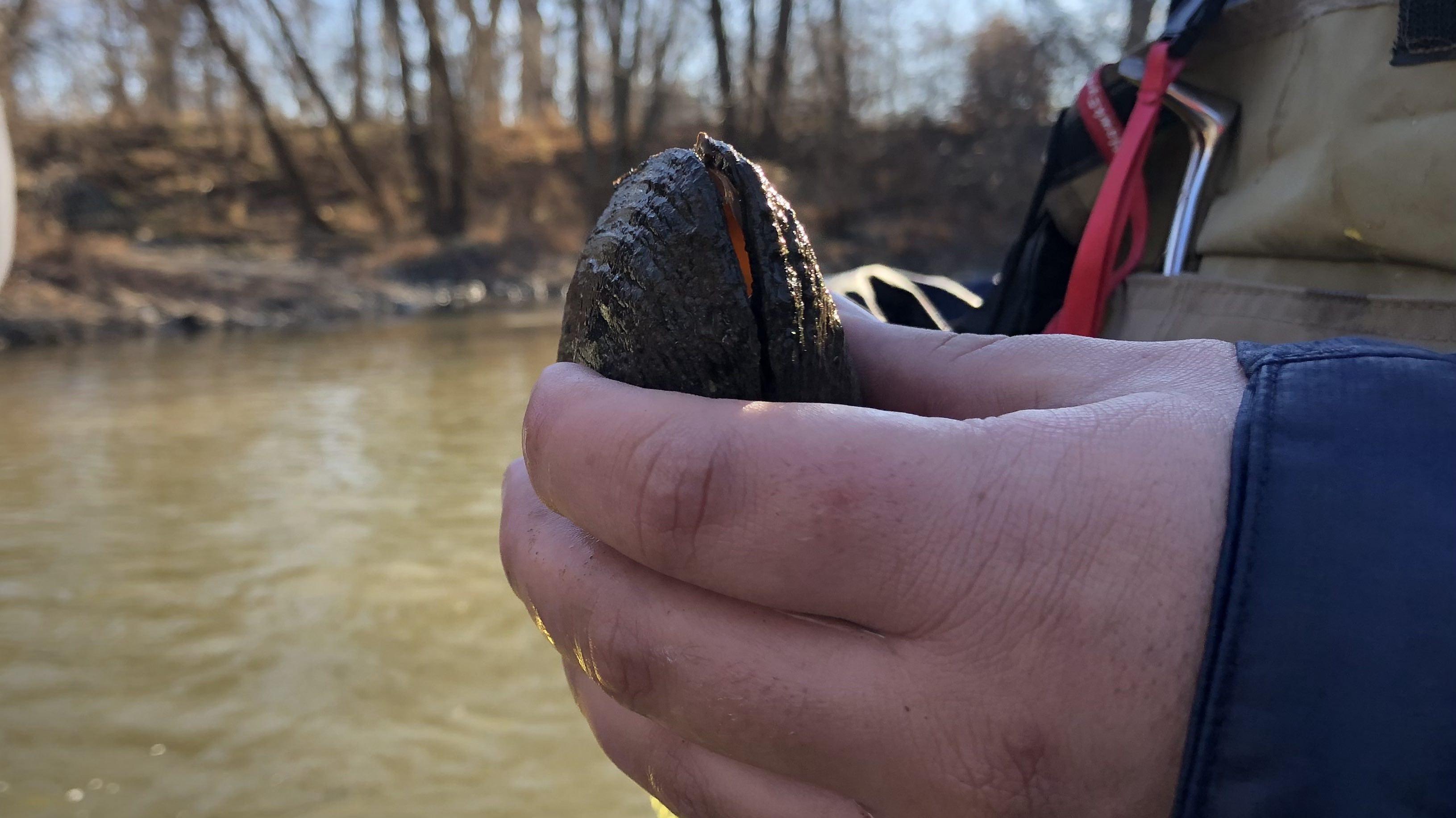 Freshwater mussels, like this one pulled from the Chicago River in December 2023, are among the most endangered group of species in North America. (Patty Wetli / WTTW News)
Freshwater mussels, like this one pulled from the Chicago River in December 2023, are among the most endangered group of species in North America. (Patty Wetli / WTTW News)
Nicodemus gathered with a group of volunteers and Urban Rivers staffers in the parking lot of a suburban Cook County forest preserve, near a North Branch access point.
The mussel hunt was on. Into the Chicago River they went, with a WTTW News reporter in tow.
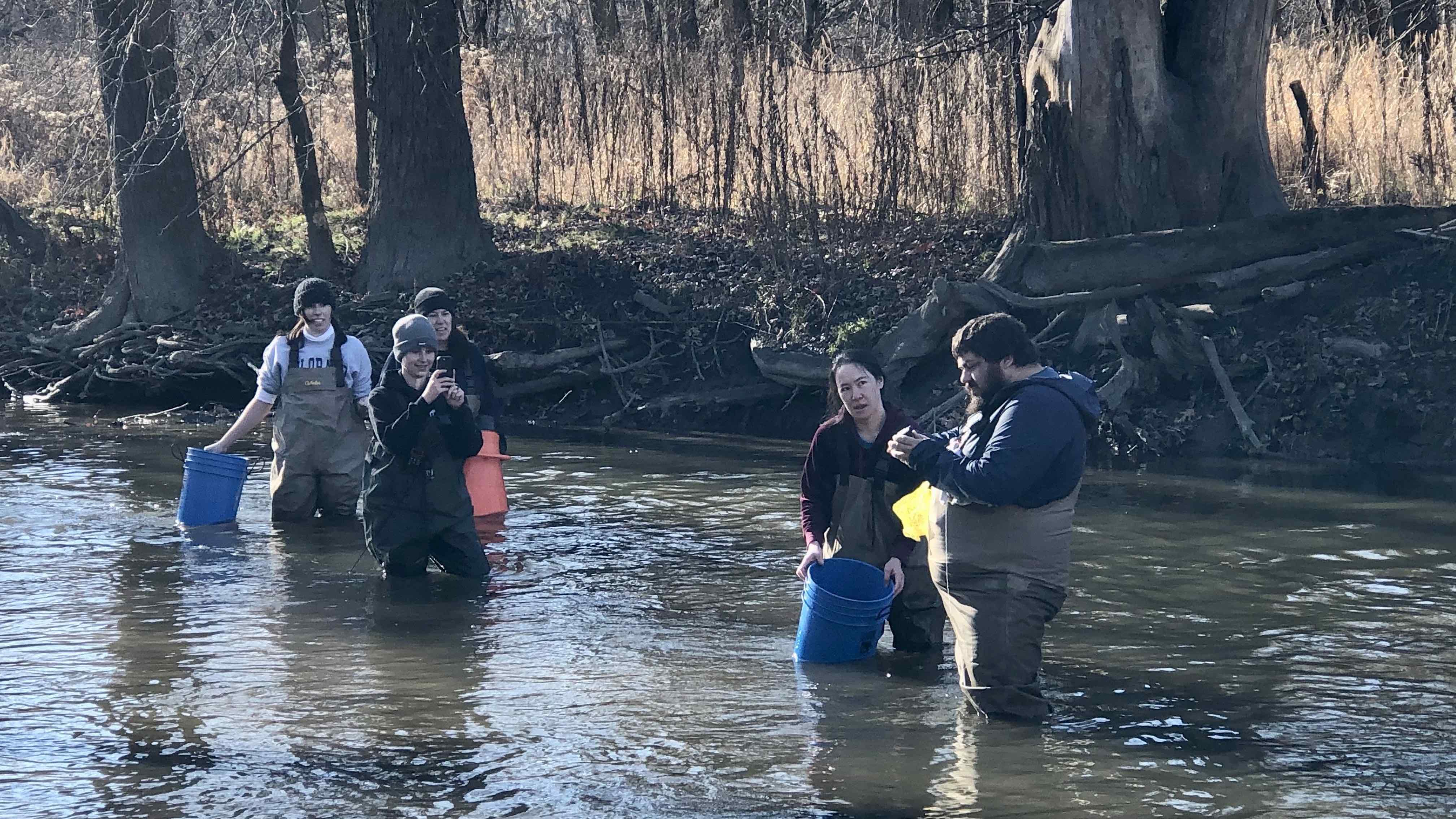 Phil Nicodemus of Urban Rivers, right, cracks open a mussel to see if it's pregnant. (Patty Wetli / WTTW News)
Phil Nicodemus of Urban Rivers, right, cracks open a mussel to see if it's pregnant. (Patty Wetli / WTTW News)
The Chicago River is cleaner now than at any point in the past 100 years, and activities like kayaking are actively encouraged, yet immersion for what will amount to a mid-stream hike goes against everything Chicagoans have ever been told.
Nicodemus took the lead and advised the group to move slowly and cautiously. Sediment makes it nearly impossible to see the river bottom, so every step is a shot in the dark, encountering rocks, tree branches and other debris. Footholds are tenuous, drop-offs are sudden, and pockets of deep silt grip feet with a suction like wet concrete. The current is surprisingly strong.
Everyone had been outfitted with chest waders to keep them mostly dry, but not so much warm.
“If you’ve never been in waders before and you get in cold water, it’s going to feel like you’re getting water in here but you’re really not. You’re just feeling coldness,” Nicodemus said.
He took the water’s temperature: 42 degrees.
Hands remained exposed for the task at hand, which would require plunging them into the river to retrieve any found mussels, after which wet gloves would only be a liability. Successful or not, the hunt wouldn’t last more than two hours, Nicodemus said, which is about as long as experience has shown him people can tolerate these conditions.
And yes, it would make more sense to hunt for mussels in summer, but Nicodemus and crew were searching for pregnant females (more on that in a minute) and mussels’ biological clock is set to winter.
Each person carried a clear-bottomed bucket, not for use as a scoop or container but as a visual aid. Picture snorkeling, except instead of diving underwater, volunteers remained above the surface and pressed their buckets into the water, using them like “goggles” to view the riverbed. Or maybe a better analogy would be to think of the buckets as extremely low-tech glass-bottomed submersibles, with volunteers as the pilots.
Nicodemus had one extra piece of equipment: a pair of tweezer-sized specula to crack open any mussels in order to determine whether they were pregnant or not. Turns out, there’s no way to differentiate a male from a female mussel by their outward appearance, and the only sign of pregnancy is an internal swollen, purplish gland.
The Illinois Department of Natural Resources had issued a permit allowing Urban Rivers to take five mussels. Nicodemus had scheduled hunts for several consecutive days and was hopeful he’d hit his quota before year’s end, while the river was still shallow and had yet to freeze.
“This is the right time,” he said. “This is going to be the best shot.”
Video: Phil Nicodemus of Urban Rivers leads a hunt for pregnant mussels in the Chicago River in December 2023. (Patty Wetli / WTTW News)
Parts of the upper North Branch still resemble what the “whole river is supposed to look like,” Nicodemus said, and he had chosen this specific location because it’s known to have a relatively high density of mussels.
The hunt started off promisingly enough, with Nicodemus spotting a mussel within minutes. He held it up for the group to get a look at their quarry: the aptly-named giant floater (Pyganodon grandis), roughly the size of an adult hand. Highly pollution tolerant, giant floaters are the most common type of native freshwater mussel found in Illinois, and the best candidate for Urban Rivers’ experiment.
After a quick exam, Nicodemus pronounced the mussel not pregnant (or male, who knows) and returned it to the riverbed.
Why focus solely on pregnant mussels?
The point of the exercise, Nicodemus explained, was to take the mussels to the Urban Stream Research Center, where the glochidia (or microscopic larvae) could be harvested from their mother. A single pregnant mussel contains thousands of glochidia, which, when they’re expelled, need to find a host fish to attach to in order to survive. (They feed on the fish, which doesn’t harm the fish, unless it’s hosting an overwhelming amount.)
At the research center, glochidia are placed with a ready supply of fish — something that isn’t guaranteed in the river — and the threat of the larvae being eaten by predators is nil. Once they’ve reached the stage where they’re able to detach from their host, the juvenile mussels will be pond-reared at the center and handed over to Urban Rivers in the fall, at which point they’ll be the size of a fingernail, Nicodemus said.
The process gives the baby mussels a head start on reaching maturity by eliminating some of the most hazardous points in their development, he said. And the mothers are returned to their original streambed in order to continue providing their vital ecosystem services.
But first, Nicodemus and crew needed to unearth some pregnant females.
At every cry of “Found one!,” heads swiveled with excitement — and a bit of competitive envy — as the mussel was pulled from the water and handed over to Nicodemus.
Nope, not pregnant.
Nope, this one’s dead.
Nope, this one’s a white heelsplitter (Lasmigona complanata), wrong species.
The team split into two groups, one headed upstream, the other downstream. The results were the same — anticipation followed by deflation — and as the two-hour mark approached, Nicodemus pulled the plug on the day’s operation.
If the excursion ultimately proved frustrating, it also underscored mussels’ fragile foothold in the river.
But there is, we can report, a positive coda to this story.
Nicodemus emailed news that just a day after the failed hunt WTTW News took part in, a fresh team of volunteers met with success, a mere half-mile south from the previous site.
“We found five gravid females almost immediately!” he wrote. “Funny how close together they can be and be in completely different moods. Maybe it actually was all dudes up north and the females downstream!”
Staff at the research center described the females as “stuffed,” Nicodemus added. “So, plenty of glochidia to go around. We will have to build more mussel bunkers for them.”
Contact Patty Wetli: @pattywetli | (773) 509-5623 | [email protected]

